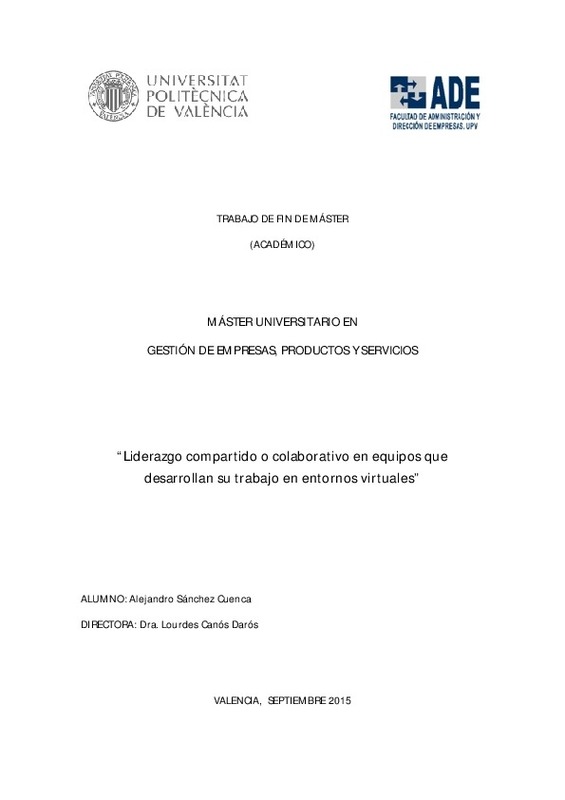JavaScript is disabled for your browser. Some features of this site may not work without it.
Buscar en RiuNet
Listar
Mi cuenta
Estadísticas
Ayuda RiuNet
Admin. UPV
Liderazgo compartido o colaborativo en equipos que desarrollan su trabajo en entornos virtuales
Mostrar el registro completo del ítem
Sánchez Cuenca, A. (2015). Liderazgo compartido o colaborativo en equipos que desarrollan su trabajo en entornos virtuales. http://hdl.handle.net/10251/55449.
Por favor, use este identificador para citar o enlazar este ítem: http://hdl.handle.net/10251/55449
Ficheros en el ítem
Metadatos del ítem
| Título: | Liderazgo compartido o colaborativo en equipos que desarrollan su trabajo en entornos virtuales | |||
| Autor: | Sánchez Cuenca, Alejandro | |||
| Director(es): | ||||
| Entidad UPV: |
|
|||
| Fecha acto/lectura: |
|
|||
| Resumen: |
[ES] El desarrollo de las tecnologías de información permite nuevas formas de trabajo y estructuras organizacionales. Los equipos de trabajo ya no tienen la necesidad de estar situados en un mismo lugar y pueden estar ...[+]
[EN] The development of information technology enables new forms of work and new organizational structures. The teams no longer have the need to be located in one place and can consist of individuals from different academic ...[+]
|
|||
| Palabras clave: |
|
|||
| Derechos de uso: | Reserva de todos los derechos | |||
| Editorial: |
|
|||
| Titulación: |
|
|||
| Tipo: |
|
recommendations
Este ítem aparece en la(s) siguiente(s) colección(ones)
-
ADE - Trabajos académicos [3728]
Facultad de Administración y Dirección de Empresas







